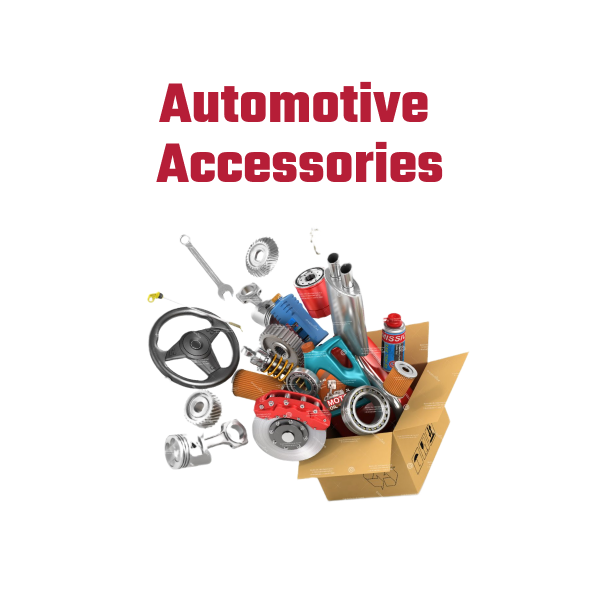Driving The Future: Augmented Reality In Automotive Industry
Being a car enthusiast, I am excited about the future of the automotive industry, the different developments it will see and the exciting technologies to keep an eye on.
Speaking of technology, there is one in particular that is revolutionising various industries and the automotive industry is no exception. I am talking about Augmented Reality (AR).
AR has the ability to completely change how end users experience driving by merging digital information with the real environment. The potential of augmented reality on the road is expanding, from improving safety and navigation to offering tailored information and entertainment.
In this blog, I am going to take you through the uses of augmented reality in the automobile sector, how it will enhance customers’ product experience and much more. But first, let’s know what this sorcery is.
What is Augmented Reality?
In simple terms, Augmented reality is the addition of digital elements to the physical environment. AR created a computer-generated perception of the real world to offer an interactive experience to consumers. One major benefit is that, unlike virtual reality, which takes specialised VR gear, augmented reality (AR) only needs a smartphone or tablet to display the virtual elements. Augmented reality uses software, apps, and hardware like AR glasses to superimpose digital material over actual settings and objects.
Augmented reality use cases in the automotive industry
There are numerous applications for augmented reality. AR is already making an impact in this sector. Big sharks with the likes of BMW, Porsche and Land Rover are using this technology to speed up maintenance and repair tasks. Here are a few ways it is altering our interactions with cars.
1. Better navigation
AR can enhance navigation by giving drivers real-time information and visual cues right in their line of sight.
The current automotive navigation system displays information on screens inside the car which requires drivers to frequently take their eyes off the road. Drivers will find it easier to navigate inside and between cities if elements like pointers signalling turns, street addresses and local petrol stations or supermarkets appear over the actual surroundings.
As technology develops, augmented reality and sophisticated navigation will probably merge even more, giving drivers a smooth and engaging experience.
2. Better driving experience
With the use of augmented reality, drivers can receive current information about the road, such as speed restrictions, information about nearby interesting sights, and notifications regarding traffic conditions and potential hazards. Thus, AR plays not only plays a significant role in improving driver safety but it enhances the overall driving experience.
The Heads-Up-Display (HUD) technology from Mercedes-Benz is a fascinating advancement for the automobile sector. With the help of this AR technology, drivers can access information without taking their eyes off the road, making driving a lot safer for everyone.
Last but not least, automakers can employ AR to develop digital simulations of various driving situations, enabling drivers to practise and improve their skills in a secure setting.
3. Better buying experience
To purchase a car today, you don’t need to go to a showroom. Installing the AR app on your smartphone is enough.
For instance, Porsche released the “Mission E Augmented Reality” app in 2018, which is available for free download on iOS and Android mobile devices. The business advertises its electronic sports cars using this AR application.
Through AR, a customer will be able to interact with more in-depth information about a specific car and explore its components, functionalities, and various design options by overlaying them on the actual vehicle in the showroom. This will give them a clearer idea of how the car functions and what it might look like. I guess it’s safe to say that AR can alter the way people select and purchase cars.
4. Maintenance and repair
Drivers and technicians can use AR to help them with maintenance and repairs. For instance, Porsche AG has released an augmented reality (AR) app that directs mechanics through the repair procedure by superimposing detailed instructions onto the vehicle’s parts.
Porsche also makes use of AR to improve simulation throughout the prototyping and testing stages of new vehicle models. Engineers can use real-world prototypes as a projection surface for virtual data, which gives them the ability to visualise and assess vehicle performance aspects in real time.
This technology lowers the need for comprehensive manuals or training while increasing efficiency, accuracy, and vehicle understanding.
Technical experts can employ augmented reality (AR) devices to swiftly identify machinery and equipment that needs repair by simply glancing at its data and history rather than conducting a time-consuming manual search.
5. Better designing and prototyping
Augmented reality has removed the necessity for physical models, thereby revolutionising the design and prototyping processes in the automotive sector.
Automakers can put graphics onto current automobile models using spatial augmented reality (SAR), which makes the design and prototyping process more practical and affordable. Wearing glasses with augmented reality expands the range of possible applications while further improving accuracy. By enabling real-time adjustments during talks that are visible to all participants, augmented reality (AR) improves seamless cooperation among designers.
Leading automobile manufacturers like BMW and Volkswagen are embracing augmented reality technologies in their design and prototyping stages.
6. Enhancing worker safety
The improvement in worker safety is another important benefit of augmented reality in the automobile industry. The field of view of the worker can be directly overlaid with safety directives, cautions, and hazard alarms thanks to AR technology. As a result, there are fewer accidents and injuries since assembly line workers are always informed of potential risks and safety procedures.
AR technology encourages a safer working environment and aids in maintaining compliance with safety requirements by offering real-time visual indicators and guidance.
Tackle automotive challenges with AR
Automation is simply one aspect of the manufacturing of automobiles in the future. It’s about providing the best digital tools to the workers. Are your operations flexible enough to keep up with changing market demands as the automotive sector develops further?
Although manufacturers still value the human touch, manual assembly, kitting, and inspection processes are inherently error-prone. Additionally, errors might increase in number and severity when training is irregular and work practises aren’t standardised.
Augmented reality has already demonstrated its efficacy in standardising manual procedures and delivering uniform, effective training for leading automotive manufacturers worldwide.
Augmented reality and autonomous driving
The field of autonomous driving is about to undergo a revolution thanks to augmented reality (AR), which will improve user experience and safety. Real-time information and virtual objects can be superimposed onto the driver’s field of view using augmented reality (AR) technologies, delivering important information about the surroundings, driving instructions, and potential risks. Incorporating augmented reality (AR) into autonomous vehicles requires head-up displays (HUDs), which keep crucial information in the driver’s field of view, reduce distraction, and encourage safer driving.
The role of augmented reality in autonomous driving goes beyond the driver’s interface. Real-time detection and reaction to external stimuli including people, traffic signals, and road conditions are made possible by this technology. Informed judgements may be made quickly and precisely by autonomous cars due to the dynamic synthesis of sensor data and augmented reality visualisations.
With the development of technology, augmented reality will improve the travel experiences of passengers in driverless vehicles by delivering entertaining and educational material. The incorporation of AR into autonomous driving holds the potential to transform transportation, making it safer, more effective, and more entertaining for both passengers and pedestrians.
Conclusion
AR is changing or should I say “improving” the driving experience, offering a ton of advantages including cutting-edge navigation, virtual showrooms, personalised information and advanced maintenance and repair solutions.
Real-time overlays, virtual test drives, and AR Head-Up Displays (HUDs) can all be used to make travel safer, more interesting, and more interactive for both drivers and passengers. As technology develops, automotive businesses and tech entrepreneurs are advancing us towards a future where augmented reality (AR) effortlessly integrates with the driving environment, enhancing our experience and enjoyment on the road to a new level. I look forward to this journey ahead with a focus on cutting-edge automotive technologies.
Where can you buy Best Auto Spare Parts in Dubai?
Auto Spare Parts are available at different suppliers and dealers of auto spare parts in Dubai. Noorhan is amongst the leading brands that deal with genuine auto spare parts and aftermarket parts for different car brands, including BMW, Mercedes, Audi, Porsche, Honda, Toyota, Nissan, Mazda, Jeep, Ford, and other Japanese, European, American, Korean, luxury cars brand.
If you’re looking to replace your old Auto Spare Parts with high-quality aftermarket parts in Dubai, Noorhan can help you.



























































